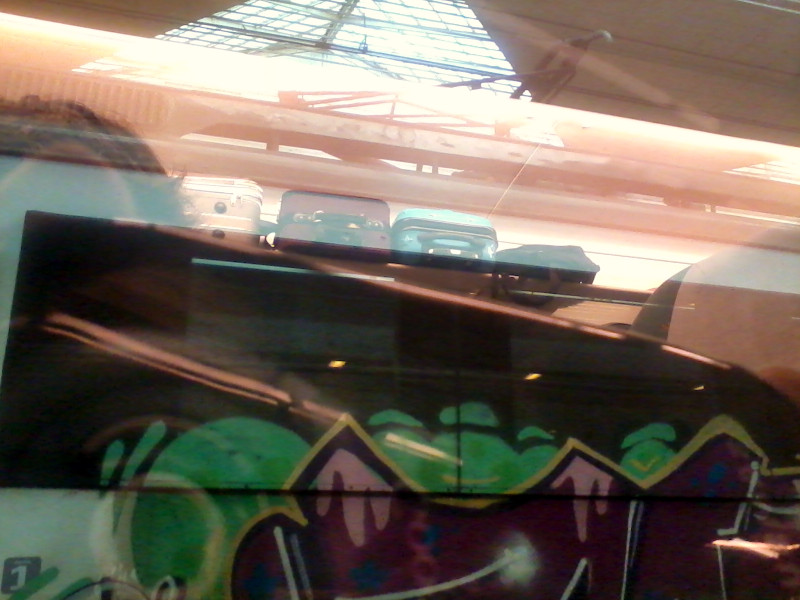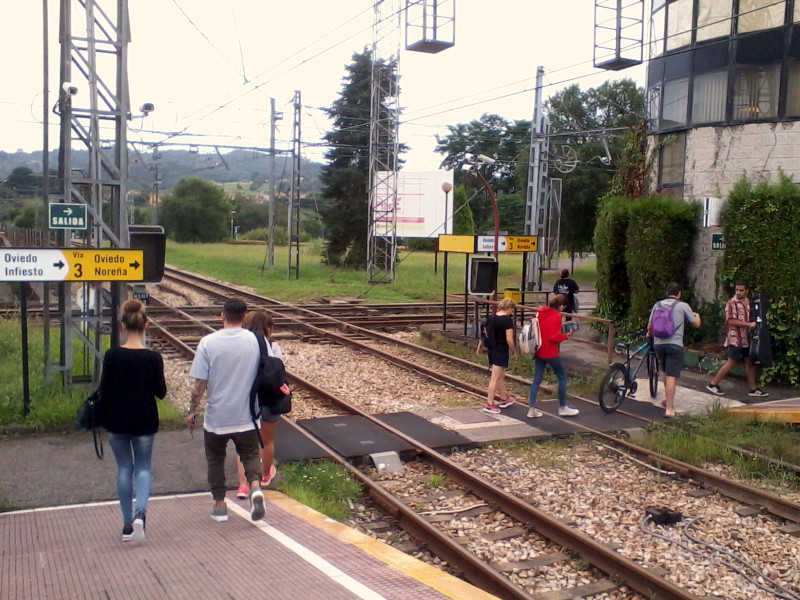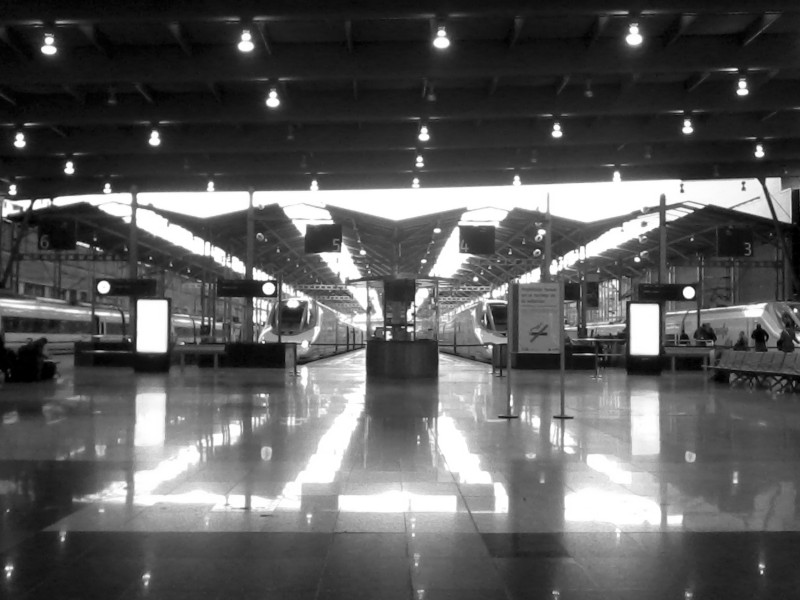An exposition of the current regulatory travails of Britain’s Community Transport sector, with an exploration of the legal possibilities for operating Dial & Ride style community services using vehicles with capacity of no more than eight. This essay provides insight into why there is so little taxi policy locally, and why the British have such a problem with sharing. Continue reading “Dialling a Ride for Eight”
Tag: Community
What is Connectivity?
This essay expounds the policy concept of transport connectivity in Britain from two diverging epistemological perspectives – nation and location. The text characterises the difficulty of managing the midst, before applying the implications to Mobility as a Service. Continue reading “What is Connectivity?”
Reanimating Regional
This essay outlines the regional biases of Spanish railway connectivity, reassesses the role of Castilla in the national railway, and ponders the balance between actuality and perception inherent in Adolfo Suárez’s doctrine of “café para todos“. Continue reading “Reanimating Regional”
Understanding Obligación
This essay builds a model of the human connectivity offered by Spain’s railways, revealing the patterns between Spaniards and the democractic tension therein, with income analysis that explores the import of “Obligación de Servicio Público”. Continue reading “Understanding Obligación”
Deconstructing Estaciones
This essay provides a demographic analysis of Spain’s railway stations, that explores the unserved areas and probes the differences between regions. Continue reading “Deconstructing Estaciones”
Disassembling Trenes
This essay deconstructs Spain’s current passenger railways to expose the deceptions of AVE and nation therein. Continue reading “Disassembling Trenes”
Is Alta Velocidad Fast?
This essay analyses and explores the regional passenger fare structure of Renfe, Spain’s national railway operator. The question, “Is Alta Velocidad Fast?”, derives from Renfe’s tradition of pricing slower trains cheaper. The question asks whether, in the era of yield management (balancing current patronage to current capacity by modifying price), the traditional fare structure should be applied to high speed, AV, operations? The journey provides an insight into the structure of modern transport geography, the haphazard strategic development and exploitation of Alta Velocidad, the management of national inequalities through fares, the conflation of public and commercial roles within single shared operations, and, from a perspective other than infrastructure, the contemporary challenges to Spain’s railways. Continue reading “Is Alta Velocidad Fast?”
Turning the Health World Upside Down
There’s a growing acceptance of the links between health, wealth and wider society. Not just the impact of wealth inequalities on measures like life expectancy. But the importance of fixing the underlying social causes of medical problems, rather than just administering the medicine and wondering why the patient doesn’t get better.
It’s convenient to frame this as a Third World problem. And while it is, it’s also a problem within and between developed countries. For example, people from one area of Glasgow (in Scotland) live a decade longer than people residing in another area of the same city, in spite of (theoretically) having access to precisely the same medical expertise.
A most basic analysis of Great Britain (and much of the developed world) reveals an organizational chasm, which most people are not prepared to cross: For example, medical services and social care provision are completely different activities – separate funding, differing structures, responsibilities, professional bodies. Even though individual “patients” shift seamlessly between them. It’s an organisational situation made worse by the difficulty both groups seem to have integrating with anything – in my experience (largely failing to integrate public transport into health and social services), a combination of:
- The intrinsic (internal) complexity of the service itself, which leaves little mental capacity for also dealing with “external” factors.
- The tendency to be staffed by those with people-orientated skills, who are often less able to think strategically or in abstract.
- The dominance of the government, with a natural tendency towards bureaucracy and politicized (irrational) decision making.
Complexity is the biggest problem, because it keeps getting worse: More (medical) conditions and treatments to know about, higher public expectations, greater interdependence between different cultures and areas of the world. Inability to manage growing complexity ultimately threatens modern civilization – it will probably be one of the defining problems of the current age. So adding even further complexity in the form of understanding about “fringe issues” is far from straightforward.
Beyond these practicalities lurk difficult moral debates – literally, buying life. Public policy doesn’t come much harder than this.
Into this arena steps Nigel Crisp. Former holder of various senior positions within health administration, now a member of the UK‘s House of Lords. Lord Crisp’s ideas try to “kill 2 birds with one stone”: For the developed world to adopt some of the simple, but more holistic approaches to health/society found in the less developed world, rather than merely exporting the less-than-perfect approach developed in countries like Britain.
To understand Crisp’s argument requires several sacred cows to be scarified: That institutions like the National Health Service (which in Britain is increasingly synonymous with nationhood, and so beyond criticism) are not perfect. That places like Africa aren’t solely populated by people that “need aid” (the unfortunate, but popular image that emerged from the famines of the 1980s). That the highest level of training and attainment isn’t necessarily the optimum solution (counter to most capitalist cultures). If you’ve managed to get that far, the political and organisational changes implied are still genuinely revolutionary: To paraphrase one commenter, “government simply doesn’t turn itself upside down”.
While it is very easy to decry Nigel Crisp’s approach as idealistic, even naively impractical, he is addressing a serious contemporary problem. And his broad thinking exposes a lot of unpleasant truths. This article is based on a lecture Crisp gave to a (mostly) medical audience at the University of Edinburgh. And the response of his audience. The lecture was based on his book, Turning the World Upside Down: the search for global health in the 21st Century (which I have not read). Continue reading “Turning the Health World Upside Down”
A Strange Game
 So it happened again. The player client software for the latest World of Warcraft expansion, Cataclysm, leaked into the public arena long before it was intended to become public. Again, because this also happened with the previous 2 expansions. A third leak is beginning to look careless.
So it happened again. The player client software for the latest World of Warcraft expansion, Cataclysm, leaked into the public arena long before it was intended to become public. Again, because this also happened with the previous 2 expansions. A third leak is beginning to look careless.
WoW.com’s (unofficial) explanation of this “failure of secrecy” ironically fails to explain most of reasons behind the Cataclysm leak. Perhaps because the politics are rather too Machiavellian?
This article discusses the relationship between the game developer and its “fansites”. It uses the Cataclysm leaks to try and explain the underlying politics. The article questions why Non-Disclosure Agreements continue to be used, when they are worse than useless. Finally, it ponders the risks of such apparently one-sided relationships.
I’ve tried to present a fair and balanced analysis, which raises some important issues that aren’t getting discussed, and should be. Obviously, I can’t know everything. Continue reading “A Strange Game”
Animal Farm
 We finally have some reliable figures for the commercial value of “minipet” micro-transactions in the game, World of Warcraft. Specifically, the sales of just 1 item: In November and December 2009, at least $2.2 million worth of Pandaren Monk pets were sold. 220,000 at $10 each. We know this because “50% of the purchasing price” was donated to charity, and “more than $1.1 million” was donated (via WoW.com).
We finally have some reliable figures for the commercial value of “minipet” micro-transactions in the game, World of Warcraft. Specifically, the sales of just 1 item: In November and December 2009, at least $2.2 million worth of Pandaren Monk pets were sold. 220,000 at $10 each. We know this because “50% of the purchasing price” was donated to charity, and “more than $1.1 million” was donated (via WoW.com).
Over 220,000 sales to a market of about 4-5 million potential customers (only active WoW players can use the minipet, and the pet does not appear to have been sold in China or Taiwan). Roughly 5% of potential customers spent $10 on an ostensibly useless vanity item: A small pet that follows you around, looking cute.
Like most virtual goods, the cost of making and selling this pet is marginal: Primarily some additional art and marketing time, all built on the back of existing systems (store, staff, world). The first 2 months of Pandaren Monk sales will have made contributions to Blizzard’s profits of about $1 million. That’s only around 1% of the business’s turnover in that 2-month period. But that 1% is “free money”. Blizzard (-Activision) would be doing a dis-service to its investors if it did anything other than continue to milk this virtual cash cow.
Apply a healthy bit of European cynicism, and it is easy to conclude a scam. Tobold‘s:
“Send me $10, and I promise to send $5 of it to charity.”
Of course, Europeans fundamentally don’t understand US philanthropic culture: The idea that it’s fine to exploit your fellow human and make outrageous amounts of money, so long as you give some of it away in the end. Some philanthropy is able to take a somewhat rational, balanced view of what is good for the world. But there is a tendency to support visually appealing issues, such as charities servicing the needs of children.
The purpose of this article is not to argue that a European, government-centric re-distribution of wealth is preferable to an approach lead by personal responsibility. (I’m not sure it is.) The problem emerging here is more fundamental: That virtual goods are replacing trade-able value with non-trade-able value. Non-trade-able value that, by definition, can not offset inequality in (game) society. Donating part of the price of sales to charity is pure irony. In true Orwellian style, we’re sleep-walking into a potentially broken social structure with the best of intentions.
This article started as a box during my Adventures in the Invisible Tent, but has been expanded here in much greater detail. This article describes what a minipet is, highlights the role of money to balance inequality in society, and explains the problem with virtual goods. Continue reading “Animal Farm”






